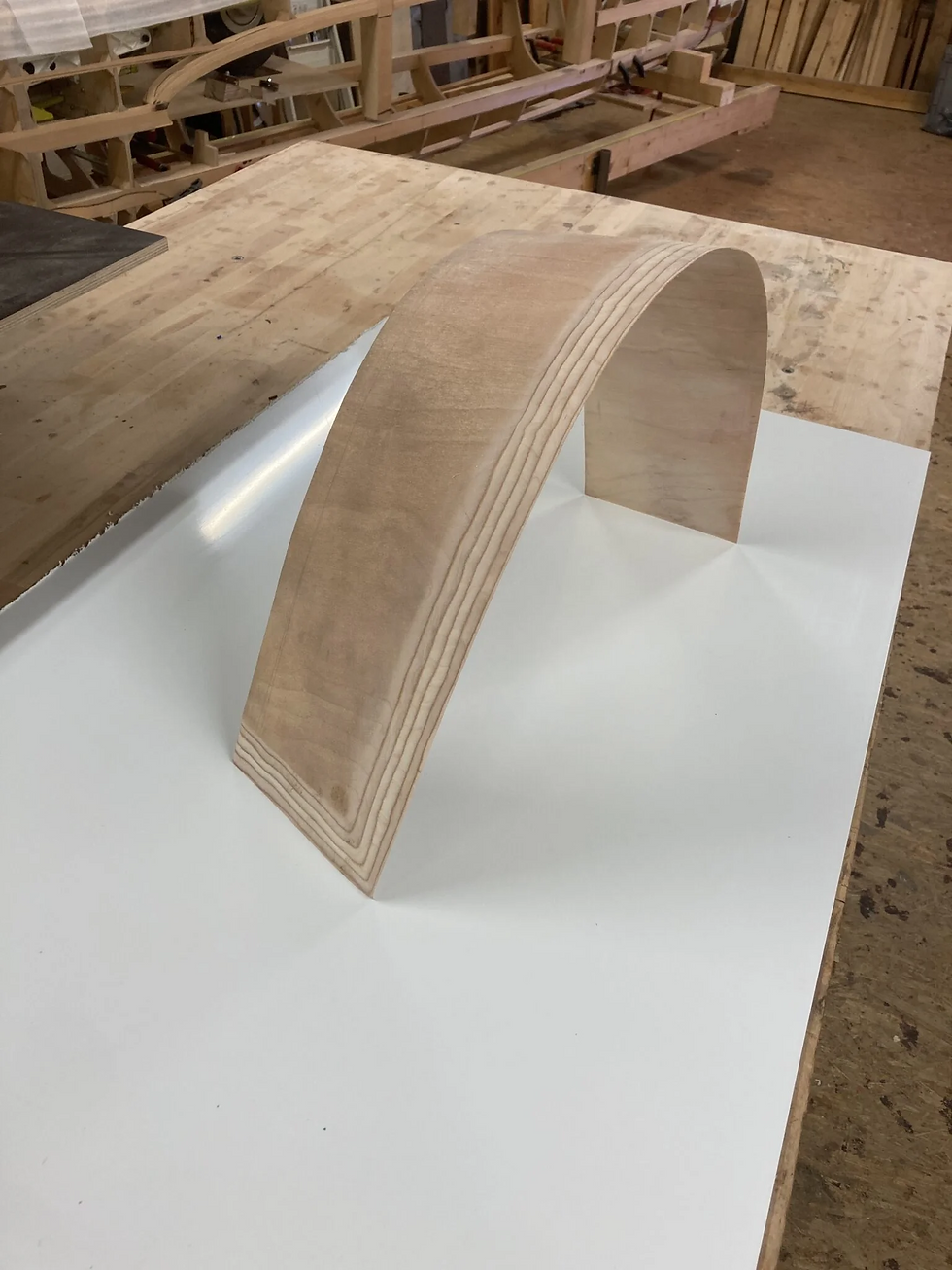
The fuselage sheating is being done entirely with 3mm plywood. To determine how to bend the boards of this thickness over the fuselage form, a bit of basic research was required. Additionally, each segment must overlap the adjacent segment with a 1:15 scarf joint.
The biggest challenge here is cutting the segments to exact millimetre precision before the jointing and shaping. Any subsequent corrections require a significant amount of hand sanding and refinement.
For the scarf joints, I was able to use my previously built setup with an integrated dust extraction system. After a brief tuning and testing phase, this machine is now producing perfect cuts, which only need a bit of final touch-up by hand to ensure smooth, precise surfaces.

A widely used method to make plywood flexible is by softening it with steam. For this, I built a steam box large enough to accommodate even the biggest segments. Inside, each plywood piece is suspended and steamed until it becomes pliable. To fill the box with hot steam effectively, I sourced a steam generator designed for saunas. It came complete with a thermostat, timer, remote control, radio receiver, and even an MP3 connection—everything you need for a truly high-tech steaming experience.
After about two hours of steaming, the plywood becomes sufficiently flexible to be moulded over the fuselage.

After about 24 hours of being stretched into its final position on the fuselage and another 24 hours of drying time in the open position, the finished piece is now ready for assembly.

In the meantime, the first 5 segments have been glued in place, and the final shape of the fuselage is slowly becoming visible.

